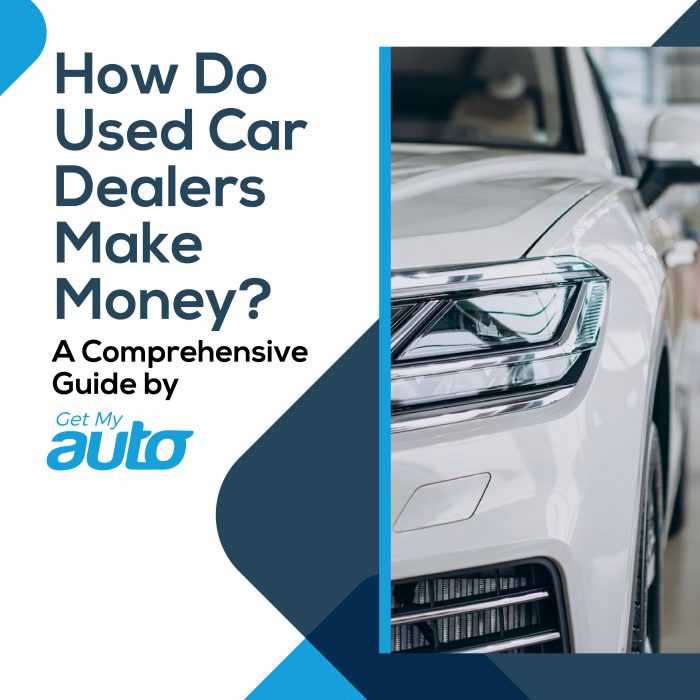The used car market is a bustling industry, valued at hundreds of billions of dollars, but the intricacies of how dealers turn a profit remain a mystery to many. While it may seem like a straightforward business of buying low and selling high, the reality is far more complex. The business model of a used car dealer is multifaceted, involving a web of revenue streams that go beyond the simple transaction of buying and selling cars. From the nuances of vehicle acquisition and reconditioning to the complexities of in-house financing and after-sale services, there’s a lot that goes into making a used car dealership profitable. In this blog post, we’ll delve deep into these various revenue streams, demystifying the operations that contribute to a used car dealer’s bottom line. Whether you’re a consumer looking to understand the value you’re getting or an aspiring dealer aiming to break into the market, this comprehensive guide will offer valuable insights into vehicle sales, financing options, service packages, trade-ins, and more.
Vehicle Sales: The Bread and Butter
Buying Low and Selling High
The primary way used car dealers make money is by purchasing vehicles at a lower price and selling them at a markup. Dealers often acquire cars from auctions, trade-ins, or direct purchases from individuals. After acquisition, these cars usually undergo reconditioning—repairs, cleaning, and sometimes even minor upgrades—to make them more attractive to buyers. This reconditioning process adds value to the vehicle, allowing the dealer to sell it at a higher price and make a profit.
Certification and Warranties
Certified pre-owned vehicles are another lucrative aspect of used car sales. These cars undergo rigorous inspections and come with extended warranties, making them more appealing to buyers willing to pay a premium for peace of mind. The certification process, while costly, often justifies a higher selling price, thereby increasing the dealer’s profit margin.
Financing: The Hidden Goldmine
In-House Financing
Many used car dealers offer in-house financing, which allows them to earn interest on the loans in addition to the profit from the car sale. This is especially profitable when dealing with buyers who have less-than-perfect credit and are willing to accept higher interest rates.
Partnering with Financial Institutions
Some dealers partner with banks or credit unions to offer loans. In these arrangements, the dealer earns a commission for every loan facilitated, adding another layer of profitability to the business.
Service and Repairs: The After-Sale Profit
Service Packages
After the initial sale, dealers often offer service packages or extended warranties. These packages can include routine maintenance, oil changes, and tire rotations. Because these services are often marked up significantly, they represent a high-profit margin and a steady income stream post-sale.
Parts Sales
Dealerships frequently have a parts department that sells a variety of car parts and accessories. This department can be particularly profitable if the dealership specializes in a specific make or model that requires specialized or hard-to-find parts.
Trade-Ins: The Cycle Continues
Trade-ins are another avenue for acquiring inventory. When customers come in to buy a newer used car, they often trade in their old vehicles. Dealers can refurbish these trade-ins and sell them, or auction them off. This not only replenishes the inventory but also facilitates another sale, keeping the revenue cycle going.
Ancillary Products: The Add-Ons Add Up
Insurance and Protection Packages
Many dealers offer additional products like gap insurance, protection packages for tires or paint, and extended service contracts. These add-ons may seem like small purchases, but when sold to a large number of customers, they can significantly contribute to the dealership’s bottom line.
Conclusion
The used car dealership business model is complex and diversified, involving multiple revenue streams beyond the straightforward buying and selling of vehicles. From in-house financing and partnerships with financial institutions to offering extended warranties and service packages, dealers have various ways to maximize their profits.
Understanding these revenue streams can demystify the car buying process for consumers and offer valuable insights for those considering entering the used car business. At GetMyAuto.com, we aim to make the car buying and selling experience transparent and profitable for everyone. Stay tuned for more invaluable industry insights!


